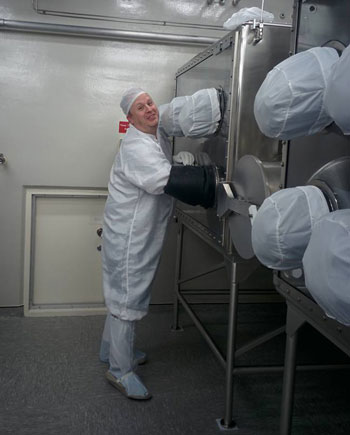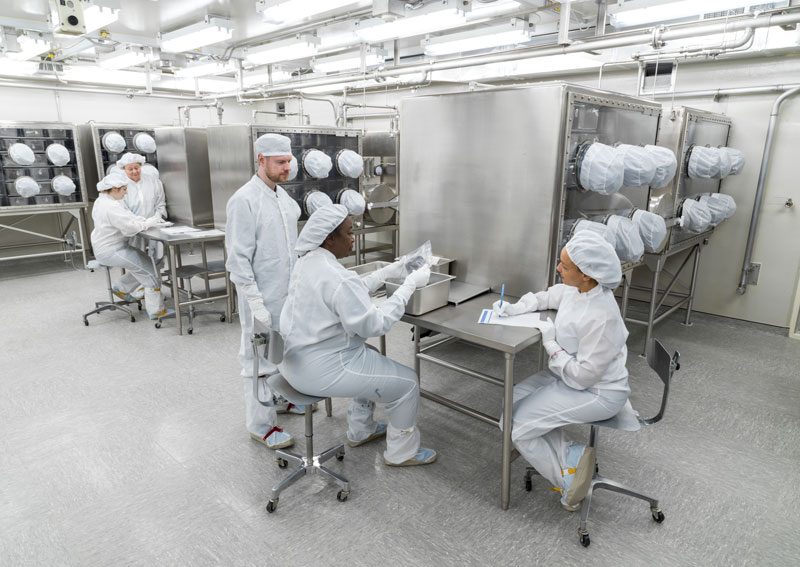Ryan Zeigler has a one-of-a-kind job: He’s the guy in charge of the Moon rocks.
Starting with Apollo 11 in 1969 and ending with Apollo 17 in 1972, astronauts brought back more than 380 kilograms of samples from the Moon—from micrometer-scale motes of dust to boulders weighing more than 13 kilograms. In the 50 years since the Moon rocks arrived back on Earth, scientists all over the world have used these samples to peer back in time to the early days of our solar system, making major discoveries about the formation of the Moon and Earth.
Today, the Moon rocks are safely stored in a windowless, hurricane-proof building at Johnson Space Center. It is Zeigler’s job to oversee the samples and review proposals from scientists who wish to study them. Earlier this year, NASA announced that they will open up a new cache of never-before-studied Apollo samples, which they hope will reveal even more insights about our nearest neighbor and our own planet.

In addition to the planetary science discoveries the Apollo samples have yielded, the Moon rocks have also taught scientists how to safely handle, store, and study samples from other planetary bodies, including asteroids sampled as part of the Hayabusa and Origins, Spectral Interpretation, Resource Identification, Security, Regolith Explorer (OSIRIS-REx) missions.
In this Centennial episode of Third Pod from the Sun, Zeigler provides an insider’s view of his unique career—a job that is equal parts exciting, humbling, and nerve-racking. He details how astronauts obtained samples from the Moon, how the Apollo samples are stored and provided to researchers, the discoveries the rocks have yielded over the past 50 years, and what it is really like to hold a Moon rock in your hand.

This episode was produced by Nanci Bompey and mixed by Collin Warren.
—Nanci Bompey (@nbompey), Contributing Writer, AGU
Citation:
Bompey, N. (2019), Podcast: Apollo Moon rocks, Eos, 100, https://doi.org/10.1029/2019EO128387. Published on 15 July 2019.
Text © 2019. AGU. CC BY-NC-ND 3.0
Except where otherwise noted, images are subject to copyright. Any reuse without express permission from the copyright owner is prohibited.
Text © 2019. AGU. CC BY-NC-ND 3.0
Except where otherwise noted, images are subject to copyright. Any reuse without express permission from the copyright owner is prohibited.

